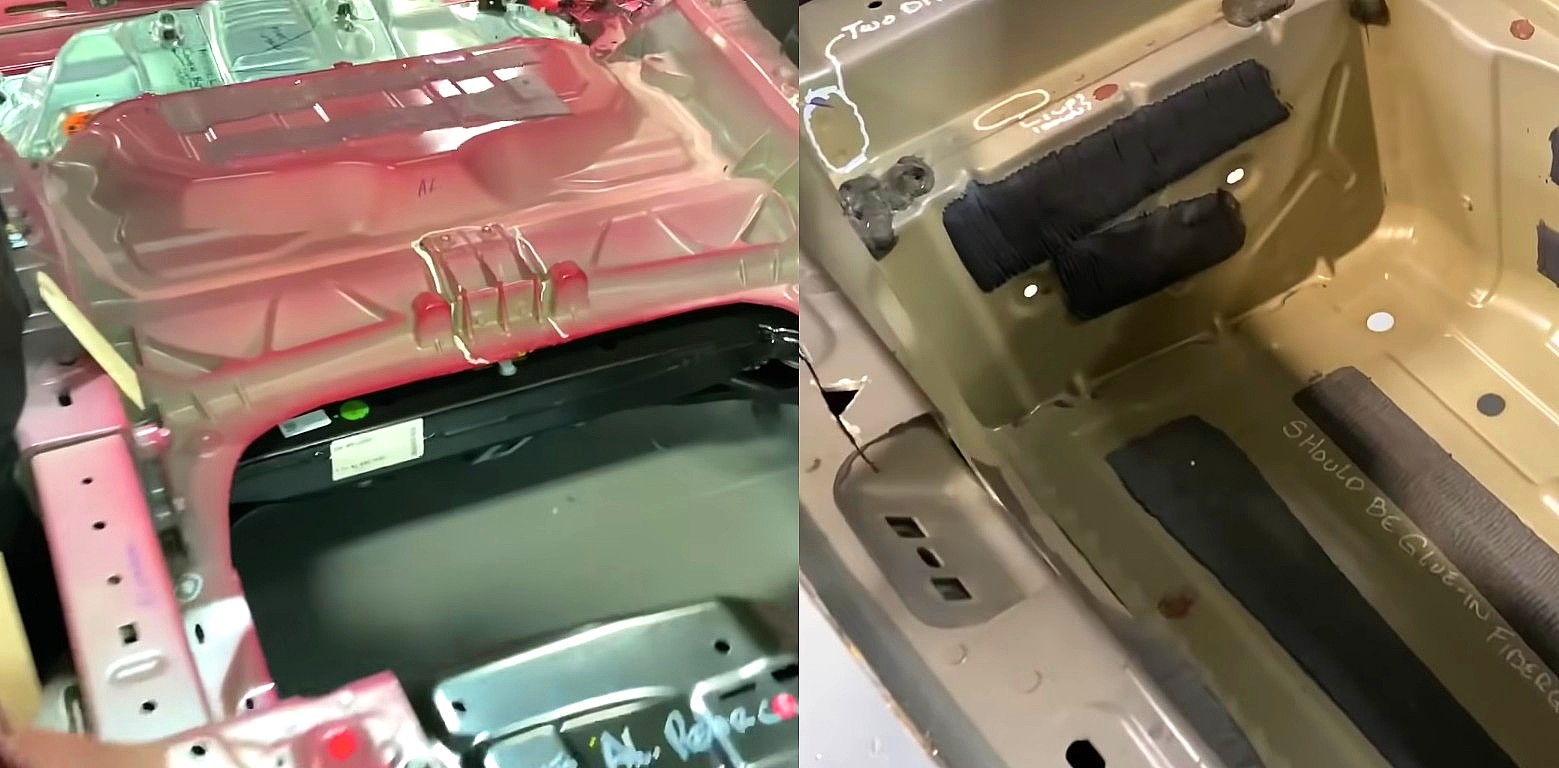
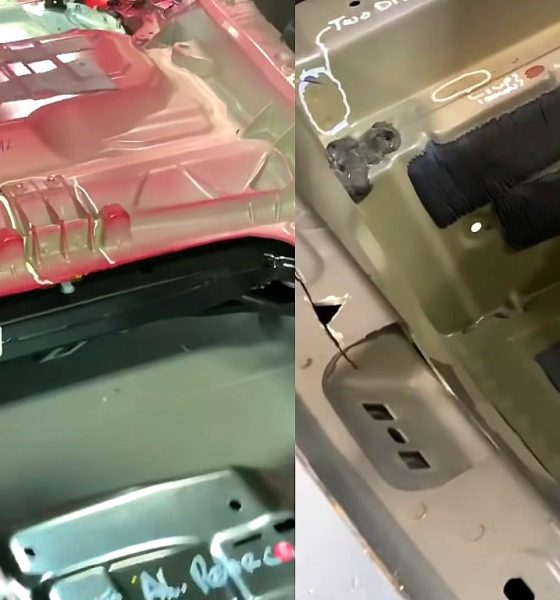
News
Tesla Model Y vs Model 3 casting comparison shows that legacy auto’s ‘soil-your-pants’ moment is at hand
Back in April 2018, automotive teardown expert Sandy Munro mentioned that if Tesla had contracted an experienced automaker to produce the early-production Model 3’s body, the electric car maker would have “wiped the floor with everybody.” This is because from the suspension down, the Model 3 was a stellar piece of engineering, despite its body having several issues.
Its electric motors were compact, powerful, and cost effective; its batteries are the best in the industry, and its driving dynamics give the impression that the vehicle was riding on rails. Munro noted that if Tesla had hit a home run with the Model 3’s “dinosaur technologies” like its welds and casts, even veteran auto giants like Toyota would appropriately be “crapping their pants.”
It has been nearly two years since Munro mentioned those words during an appearance at YouTube’s Autoline After Hours. Tesla has changed a lot since then, and the company has even released its latest vehicle, the Model Y crossover. Sharing 75% of the Model 3’s parts, the Model Y is designed as a mass-market electric vehicle, and one that can be even more disruptive as its sedan sibling.
Munro, for his part, has acquired and started a teardown of the all-electric crossover. And based on his findings thus far, it appears that Tesla’s “dinosaur technologies” have improved vastly since the Model 3. This is most evident in the rear casting utilized on the two vehicles.
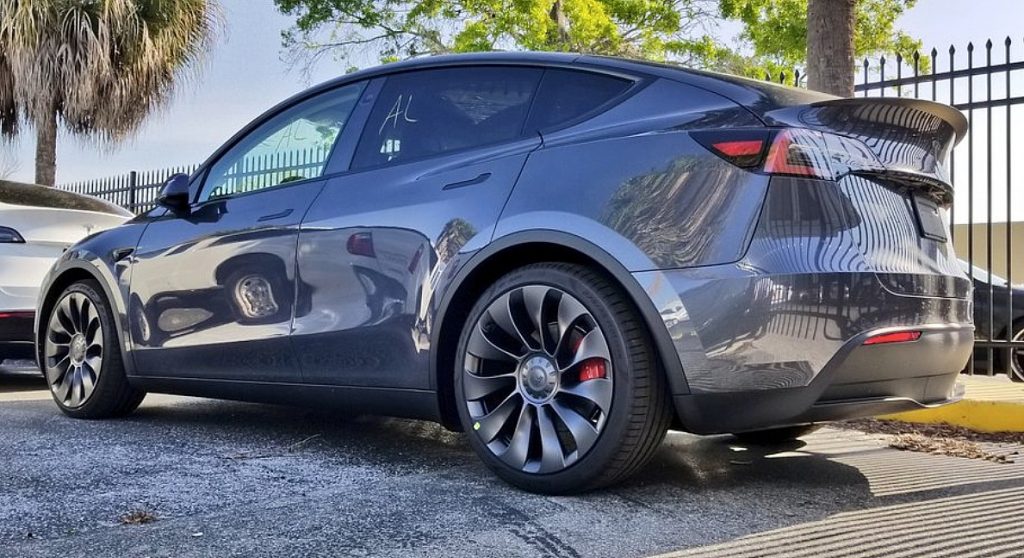
One look at the Model Y and Model 3’s rear casts shows that the two vehicles are already worlds apart in terms of build quality and design. Munro noted that he did not like the Model 3’s rear casting at all, since it was also over-engineered, with about 100 parts utilized for its rear trunk.
In a way, the Model 3’s rear casting represented the hubris that Elon Musk has admitted to in the past, as it showed Tesla essentially trying to fix something that is not necessarily broken. The result of this was a lot of challenges for Tesla, and a lot of issues with the early-production Model 3’s rear casting.
The Model Y is an entirely different animal. The all-electric crossover features what could only be described as a giant rear casting that is the complete antithesis of the Model 3’s. It has few parts, its welds are consistent, and it features a trunk tub that is similar to those utilized by the world’s best automakers. It’s pretty much what the Model 3 could have been if Tesla was more experienced when they started building the all-electric sedan.
If the Model 3’s rear casting was an exercise in hubris, the Model Y’s rear cast is an exercise in humility. It showed that Tesla is flexible, and that it’s willing to learn, even if it meant abandoning its initial plans and starting from the ground up. Tesla evidently abandoned the early-production Model 3’s rear casting and trunk design. And it’s all the better for it.
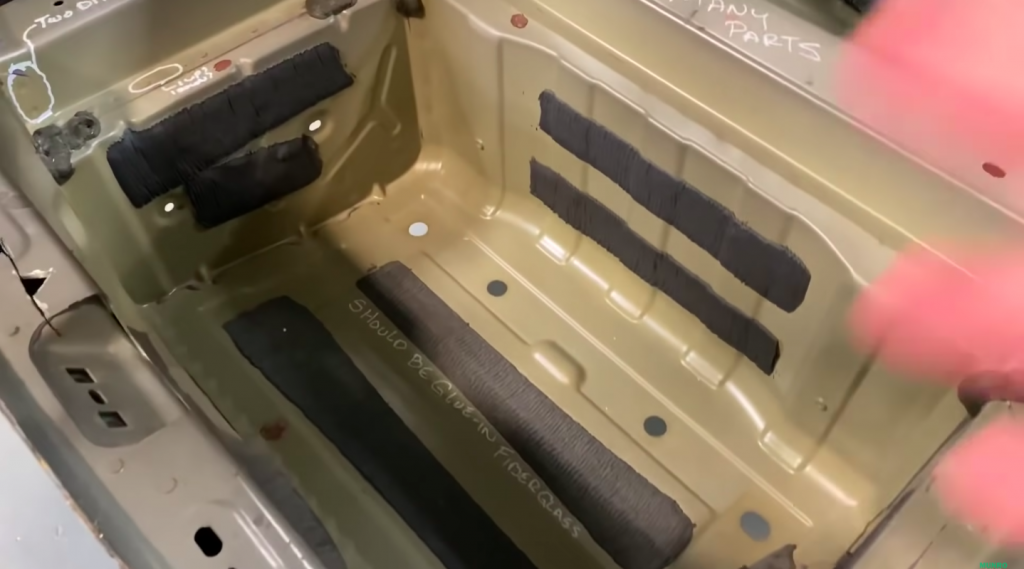
A lot of this could be attributed to Elon Musk himself. Munro has noted in the past that he and the Tesla CEO had talked over the phone during his Model 3 teardown, where Musk explained the reasons behind some of the findings about the all-electric sedan. Munro’s firm later sent Tesla a pro bono list of over 200 suggestions that can improve the Model 3’s body.
These suggestions seem to have come to life in the Model Y. Granted, the teardown process for the all-electric crossover has only just begun. Still, several aspects of the vehicle, most notably its rear casting, shows that Tesla did learn from the Model 3, and it has become a much more mature automaker today. Other suggestions from the teardown expert were also applied to the Model Y’s other components, such as its wiring.
It should be noted that Tesla’s fast evolution is partly due to the company’s Silicon Valley startup roots. Startups are notorious for quick, drastic changes in direction, and workers at these companies are required to be tough and flexible. Tesla embodies this, making the company notoriously challenging to work for compared to conventional car companies like GM or Ford.
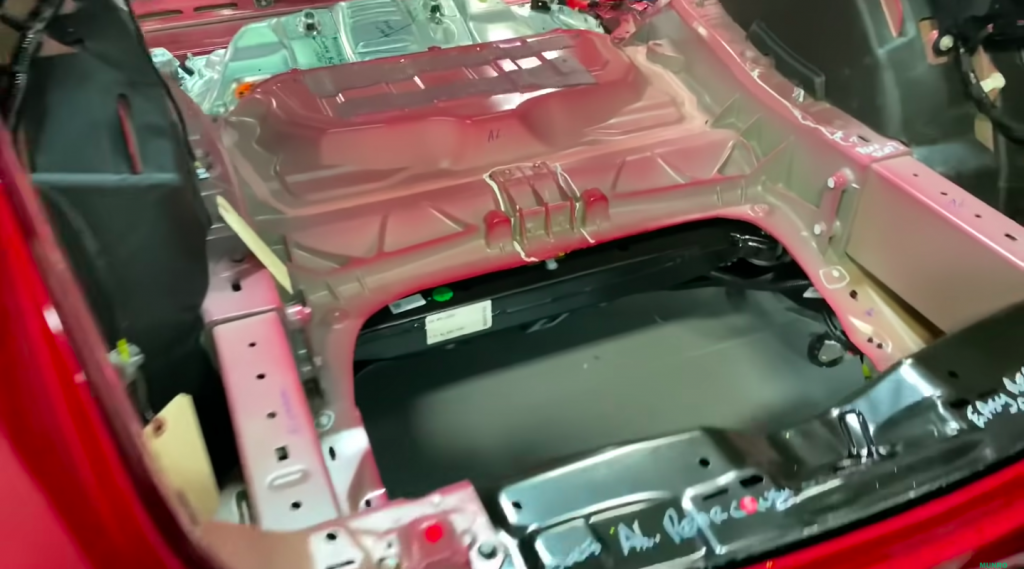
Yet despite this, Tesla has ranked consistently among the most attractive firms for engineering students. This is because in Tesla, conventional corporate bureaucracy is replaced with an open communication system that allows even interns to share their ideas with company executives. Some of the issues in the Model 3’s early production lines, for example, were addressed by interns, who were later hired full-time by Tesla.
The Model Y is a crossover, which means that it is competing in one of the fastest-growing segments in the auto industry today. With the Model Y, Tesla has the chance to make its biggest mark in the market yet. Fortunately, the electric car maker appears to have done its homework before it released its newest vehicle. One could even argue that Tesla released the Model Y at the perfect time. A mass-market all-electric vehicle that can disrupt the market of crossover SUVs requires a mature company, after all, and Tesla has only started to fit this bill recently.
Just two years ago, Munro mentioned that if the Model 3 had a properly-built body, veteran automakers like Toyota would be “crapping their pants” because of how outclassed they would be. With how the Model Y is turning out, it appears that legacy auto would be wise to keep some extra pairs of pants for the coming years, just in case.
Watch a deep dive into the Tesla Model 3 and Model Y’s rear casts in the video below.

Elon Musk
Elon Musk and Tesla AI Director share insights after empty driver seat Robotaxi rides
The executives’ unoccupied tests hint at the rapid progress of Tesla’s unsupervised Robotaxi efforts.

Tesla CEO Elon Musk and AI Director Ashok Elluswamy celebrated Christmas Eve by sharing personal experiences with Robotaxi vehicles that had no safety monitor or occupant in the driver’s seat. Musk described the system’s “perfect driving” around Austin, while Elluswamy posted video from the back seat, calling it “an amazing experience.”
The executives’ unoccupied tests hint at the rapid progress of Tesla’s unsupervised Robotaxi efforts.
Elon and Ashok’s firsthand Robotaxi insights
Prior to Musk and the Tesla AI Director’s posts, sightings of unmanned Teslas navigating public roads were widely shared on social media. One such vehicle was spotted in Austin, Texas, which Elon Musk acknowleged by stating that “Testing is underway with no occupants in the car.”
Based on his Christmas Eve post, Musk seemed to have tested an unmanned Tesla himself. “A Tesla with no safety monitor in the car and me sitting in the passenger seat took me all around Austin on Sunday with perfect driving,” Musk wrote in his post.
Elluswamy responded with a 2-minute video showing himself in the rear of an unmanned Tesla. The video featured the vehicle’s empty front seats, as well as its smooth handling through real-world traffic. He captioned his video with the words, “It’s an amazing experience!”
Towards Unsupervised operations
During an xAI Hackathon earlier this month, Elon Musk mentioned that Tesla owed be removing Safety Monitors from its Robotaxis in Austin in just three weeks. “Unsupervised is pretty much solved at this point. So there will be Tesla Robotaxis operating in Austin with no one in them. Not even anyone in the passenger seat in about three weeks,” he said. Musk echoed similar estimates at the 2025 Annual Shareholder Meeting and the Q3 2025 earnings call.
Considering the insights that were posted Musk and Elluswamy, it does appear that Tesla is working hard towards operating its Robotaxis with no safety monitors. This is quite impressive considering that the service was launched just earlier this year.
Elon Musk
Starlink passes 9 million active customers just weeks after hitting 8 million
The milestone highlights the accelerating growth of Starlink, which has now been adding over 20,000 new users per day.

SpaceX’s Starlink satellite internet service has continued its rapid global expansion, surpassing 9 million active customers just weeks after crossing the 8 million mark.
The milestone highlights the accelerating growth of Starlink, which has now been adding over 20,000 new users per day.
9 million customers
In a post on X, SpaceX stated that Starlink now serves over 9 million active users across 155 countries, territories, and markets. The company reached 8 million customers in early November, meaning it added roughly 1 million subscribers in under seven weeks, or about 21,275 new users on average per day.
“Starlink is connecting more than 9M active customers with high-speed internet across 155 countries, territories, and many other markets,” Starlink wrote in a post on its official X account. SpaceX President Gwynne Shotwell also celebrated the milestone on X. “A huge thank you to all of our customers and congrats to the Starlink team for such an incredible product,” she wrote.
That growth rate reflects both rising demand for broadband in underserved regions and Starlink’s expanding satellite constellation, which now includes more than 9,000 low-Earth-orbit satellites designed to deliver high-speed, low-latency internet worldwide.
Starlink’s momentum
Starlink’s momentum has been building up. SpaceX reported 4.6 million Starlink customers in December 2024, followed by 7 million by August 2025, and 8 million customers in November. Independent data also suggests Starlink usage is rising sharply, with Cloudflare reporting that global web traffic from Starlink users more than doubled in 2025, as noted in an Insider report.
Starlink’s momentum is increasingly tied to SpaceX’s broader financial outlook. Elon Musk has said the satellite network is “by far” the company’s largest revenue driver, and reports suggest SpaceX may be positioning itself for an initial public offering as soon as next year, with valuations estimated as high as $1.5 trillion. Musk has also suggested in the past that Starlink could have its own IPO in the future.
News
NVIDIA Director of Robotics: Tesla FSD v14 is the first AI to pass the “Physical Turing Test”
After testing FSD v14, Fan stated that his experience with FSD felt magical at first, but it soon started to feel like a routine.

NVIDIA Director of Robotics Jim Fan has praised Tesla’s Full Self-Driving (Supervised) v14 as the first AI to pass what he described as a “Physical Turing Test.”
After testing FSD v14, Fan stated that his experience with FSD felt magical at first, but it soon started to feel like a routine. And just like smartphones today, removing it now would “actively hurt.”
Jim Fan’s hands-on FSD v14 impressions
Fan, a leading researcher in embodied AI who is currently solving Physical AI at NVIDIA and spearheading the company’s Project GR00T initiative, noted that he actually was late to the Tesla game. He was, however, one of the first to try out FSD v14.
“I was very late to own a Tesla but among the earliest to try out FSD v14. It’s perhaps the first time I experience an AI that passes the Physical Turing Test: after a long day at work, you press a button, lay back, and couldn’t tell if a neural net or a human drove you home,” Fan wrote in a post on X.
Fan added: “Despite knowing exactly how robot learning works, I still find it magical watching the steering wheel turn by itself. First it feels surreal, next it becomes routine. Then, like the smartphone, taking it away actively hurts. This is how humanity gets rewired and glued to god-like technologies.”
The Physical Turing Test
The original Turing Test was conceived by Alan Turing in 1950, and it was aimed at determining if a machine could exhibit behavior that is equivalent to or indistinguishable from a human. By focusing on text-based conversations, the original Turing Test set a high bar for natural language processing and machine learning.
This test has been passed by today’s large language models. However, the capability to converse in a humanlike manner is a completely different challenge from performing real-world problem-solving or physical interactions. Thus, Fan introduced the Physical Turing Test, which challenges AI systems to demonstrate intelligence through physical actions.
Based on Fan’s comments, Tesla has demonstrated these intelligent physical actions with FSD v14. Elon Musk agreed with the NVIDIA executive, stating in a post on X that with FSD v14, “you can sense the sentience maturing.” Musk also praised Tesla AI, calling it the best “real-world AI” today.








